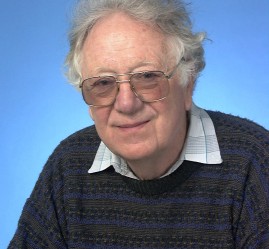443
 |
| Prof. Oliver Smithies. Photo Credit: www.nobelprizeii.org |
If you are looking to learn something new, it is nice to have a guide along your path of learning. For some, this guide is their enthusiasm to learn, for others it might be the insatiety for knowledge, even mother nature has been a guide for many thinkers and philosophers who have helped us shape the society as we know it today.
If you are budding scientist, who is aiming to make it big in the scientific community, there could be nothing better than working with a world renowned scientist and honing your skills in his/her lab. But for those who are not lucky enough to get into a famous lab, there are scientists like Oliver Smithies, who even when nearing the age of ninety is still involved with his lab and still has lab books from from his graduation days to refer to.
The inventor of starch gel electrophoresis, Oliver Smithies used the technique to fractionate proteins, which helped him find differences in haptoglobin (protein that binds haemoglobin) that were inherited. When he probed further, a specific variant of haptoglobin took Professor Smithies towards his life long research interest of homologous recombination, which after three decades of work helped him demonstrate that plasmids can be used to correct defects in human genome, something that won his the much coveted Nobel Prize. However, very few people know the Dr. Smithies tried and made an electron microscope and even a PCR machine for his lab, because back in those days, you simply couldn’t buy one.
Oliver Smithies was recently interviewed by Jane Gitschier from the University of California for the PLoS Genetics Interview Series and it is an interview that all budding scientists must read.
The Whole of a Scientific Career: An Interview with Oliver Smithies
Do come back to the blog and let us know your favorite part of the interview.


